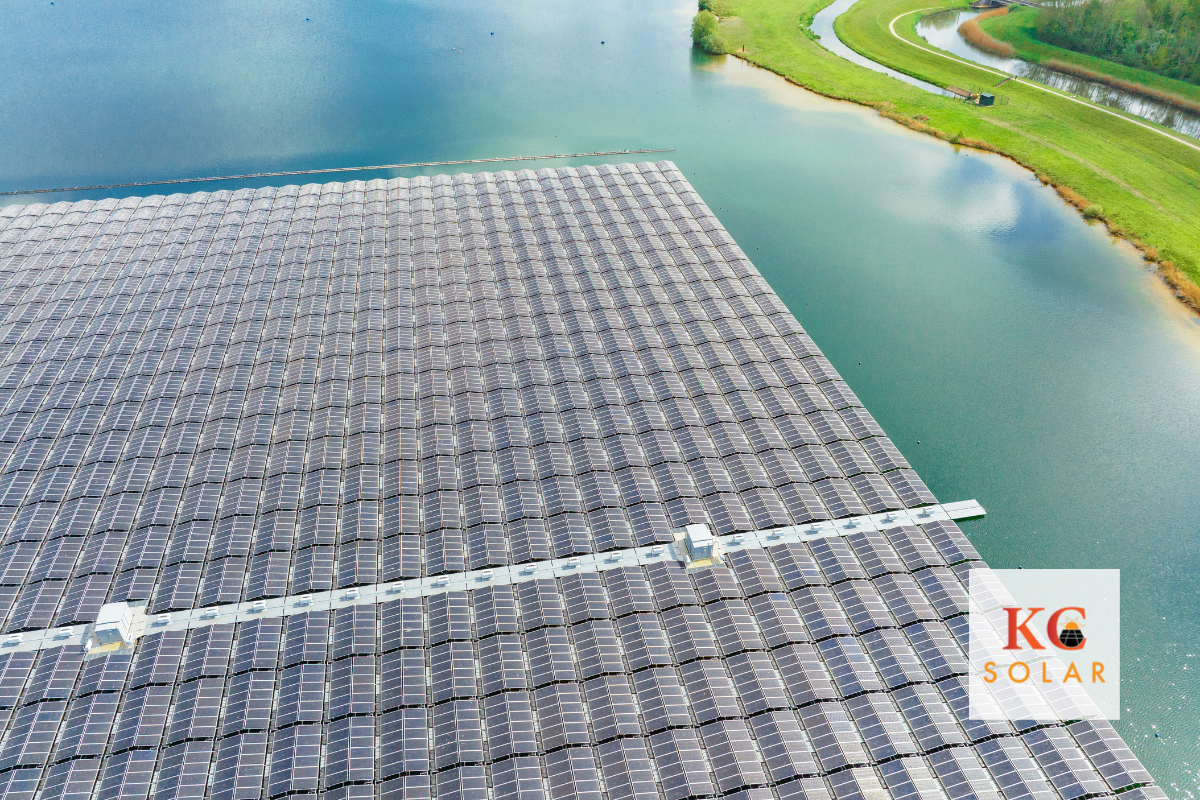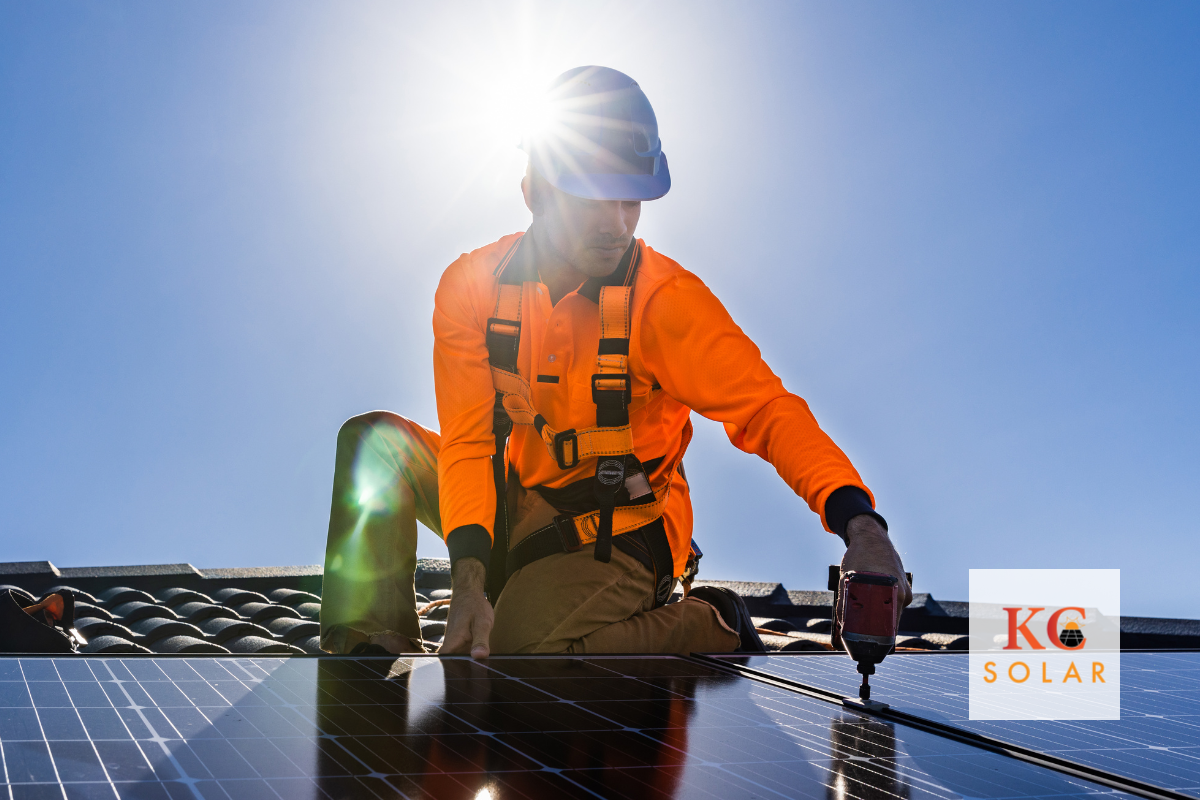It’s an exciting time to follow the solar industry. From new financial incentives that make solar more accessible and affordable, to new solar technology that could change the game completely, there’s no question that solar is growing. With more and more people choosing to go solar, more solar innovations are following suit.
Keep reading to learn more about five exciting innovations in solar we’re keeping an eye on.
1. Floating Solar Farms – Flotovoltaics
Floating solar farms are also known as floating solar power plants or floating photovoltaic (PV) systems — with the fun name “flotovoltaics — are innovative installations that harness solar energy by placing solar panels on water bodies such as lakes, reservoirs, and ponds. These floating platforms can offer several advantages compared to traditional land-based solar farms.
Firstly, floating solar farms make effective use of unused water surfaces, maximizing land availability for other purposes. They also reduce evaporation from water bodies, helping to conserve water resources. Additionally, the cooling effect of the water enhances the efficiency of the solar panels, leading to higher electricity generation.
Floating solar farms are also environmentally friendly. They reduce land degradation and ecosystem disruption by avoiding the need for large-scale land use. The water bodies underneath provide natural shading, which helps prevent excessive algal growth and maintains water quality.
Another benefit is that floating solar farms can be easily integrated with existing hydropower infrastructure, sharing transmission lines and grid connections. This synergy creates a hybrid renewable energy system, maximizing the overall power generation capacity.
2. Solar Windows
Solar windows — photovoltaic windows or transparent solar panels — are a type of technology that seamlessly integrates solar power generation into windows. These innovative windows are designed to harness sunlight and convert it into electricity while still maintaining their transparency.
Solar windows typically consist of thin layers of transparent materials that contain photovoltaic cells. These cells are capable of capturing sunlight and converting it into usable electrical energy. The transparent nature of the windows allows natural light to pass through. This enables them to function as regular windows while generating electricity at the same time.
One benefit of solar windows is that, in many cases, brand new windows do not need to be installed. Rather, the solar element is typically a thin layer that is applied to existing windows.
Although solar windows are still in the early stages of development and have some technical challenges to overcome, they hold immense promise for a future where buildings can generate clean energy while maintaining aesthetic appeal and functionality.
3. Solar Paint
Solar paint, or photovoltaic paint, is an emerging technology that aims to convert various surfaces into energy-generating structures. The concept revolves around utilizing light-sensitive compounds to capture sunlight and convert it into electricity.
The specific working mechanism of solar paint may vary depending on the formulation and materials used. However, in general, solar paint contains semiconductor particles, such as perovskite or quantum dots, which have the ability to absorb photons from sunlight.
When sunlight strikes the painted surface, the semiconductor particles within the paint absorb the photons. The electrons within the particles get excited. This process generates an electric charge. Then, the excited electrons are then directed towards an electrode within the paint, creating a flow of electrical current.
The generated electricity can be harnessed and utilized for various applications. For example, powering electronic devices, charging batteries, or supplying energy to the electrical grid.
4. Solar Desalination
Solar desalination is a process that uses solar energy to convert seawater or brackish water into fresh, drinkable water. It combines the principles of solar thermal energy and desalination to address water scarcity issues in arid regions.
Solar desalination systems typically employ solar collectors to harness sunlight and generate heat. This heat is then used to evaporate the saline water, separating the freshwater vapor from the salt and impurities. The vapor is condensed and collected, leaving behind the concentrated brine.
The advantage of solar desalination lies in its renewable and sustainable nature. By relying on solar energy, it reduces the need for fossil fuels and minimizes greenhouse gas emissions associated with traditional desalination methods. It provides a clean and environmentally friendly solution for water production.
Solar desalination is particularly valuable in remote areas with limited access to freshwater sources, as it offers a decentralized and self-sufficient approach to water purification. However, challenges remain, including the need for efficient and cost-effective systems, as well as addressing the disposal of concentrated brine without causing harm to the environment.
5. Space-based Solar Panels
Space-based solar panels are a concept that involves harnessing solar energy in space. Then, it is transmitted it to Earth for use as a source of electricity. By placing large solar power satellites or arrays in orbit around the Earth, they can continuously capture solar energy without the limitations of weather conditions or nighttime.
Once the solar energy is captured, it is converted into microwave or laser beams. These are then transmitted to receiving stations on Earth. The receiving stations would convert the beams back into electricity, which can be integrated into the existing power grid for distribution.
However, there are significant technical and logistical challenges to overcome for space-based solar panels to become a practical reality. These include the high cost of launching and maintaining satellites, developing efficient power transmission systems, and ensuring the safety and sustainability of the space environment.
While space-based solar panels are an intriguing concept, further research and advancements in space technology are required. This will help determine their feasibility and economic viability for large-scale implementation.
KC Solar Provides Solar Innovation in Kansas City
If you are looking for the best solar company in Kansas City, look no further than KC Solar. They are your local Kansas City solar panel installation experts. Once you schedule a no-pressure site visit, our experts will help you understand what solar system specifications would be best for your home or business.
KC Solar is a local company made up of KC natives with KC pride — in our city, and in our work. Which means we’ll always give you the best of ourselves.
And be sure to download our Free Solar Panel Buying Guide for more information.






